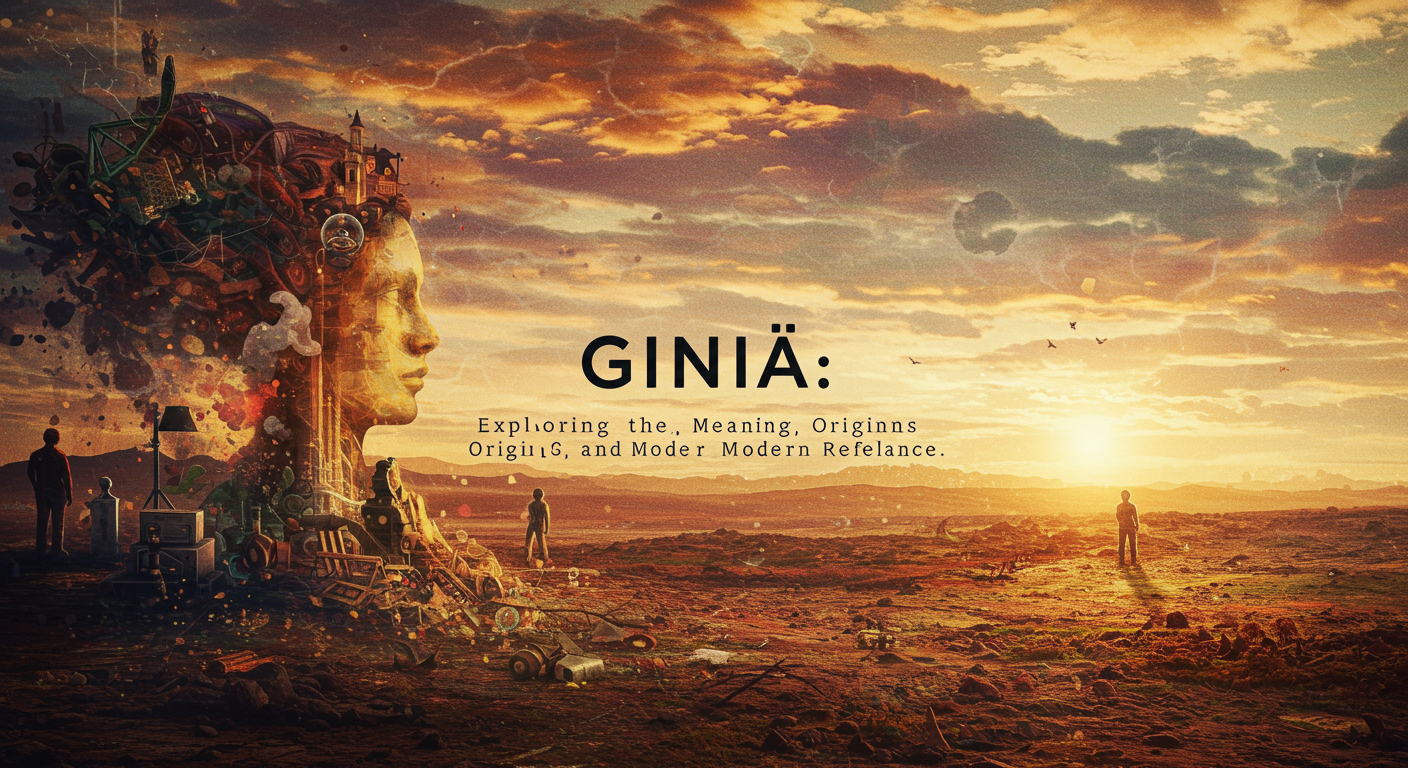In today’s fast-changing world of culture and language, certain words stand out because of their uniqueness. One such term is giniä, which has caught the attention of people across creative industries, online spaces, and cultural conversations. While it may not have a universally agreed definition, giniä represents more than just a word—it reflects identity, originality, and individuality.
This article explores the meaning of giniä, its cultural background, symbolic value, and how it is being used in modern contexts.
What Does Giniä Mean?
The word giniä is fascinating because it does not belong to one single category. It can function as a cultural reference, a personal expression, or even a creative brand name. The use of the letter “ä” gives it a distinct character, suggesting a European or international influence.
Rather than being tied to a strict meaning, giniä is flexible. It has become a word that can stand for uniqueness, creativity, and individuality, which explains its growing use in modern communication.
The Cultural Relevance of Giniä
Language and culture are deeply connected, and giniä has cultural undertones worth noting:
-
Artistic Expression – In art, music, or design, words like giniä add personality and style.
-
Fashion and Identity – Creative industries often use unique terms to stand out, and giniä fits perfectly into this landscape.
-
Community Symbolism – Online or offline groups may adopt giniä as a shared cultural marker, representing originality.
Its ability to adapt makes giniä more than just a passing trend. Instead, it is becoming a word that reflects modern cultural values.
Why Giniä Attracts Attention
The rise of giniä is not accidental. Several reasons explain why the term is gaining momentum:
-
Distinctiveness – In a world filled with common names and words, giniä stands out.
-
Digital Influence – Online communities love unique and eye-catching terms.
-
Symbol of Creativity – The styling of giniä with its accented “ä” feels modern and artistic.
-
Curiosity Factor – People are naturally drawn to words they don’t immediately understand.
This combination of curiosity and uniqueness has allowed giniä to grow in popularity across different fields.
Modern Uses of Giniä
The flexibility of giniä has made it useful in multiple contexts:
1. Branding and Business
Startups and creative companies look for names that are short, memorable, and unique. Giniä offers all of these qualities, making it suitable for a modern brand identity.
2. Online Identity
In the digital space, usernames and hashtags are a big part of identity. Giniä’s unusual spelling makes it appealing as an online handle.
3. Creative Arts
Writers, artists, and designers may use as a symbolic word in projects to represent originality and individuality.
4. Personal Meaning
For individuals, giniä can simply serve as a unique word tied to self-expression, much like a signature or nickname.
Symbolism Behind Giniä
Every unique word carries symbolic meaning. In the case of it often represents:
-
Uniqueness – Standing apart from ordinary or overused words.
-
Mystery – Its meaning is not immediately obvious, which sparks curiosity.
-
Global Identity – The accented character (ä) suggests international style and creativity.
This symbolism makes giniä attractive to younger generations who value individuality and originality in self-expression.
Challenges in Defining Giniä
The openness of is both a strength and a challenge. Because it does not have a single clear definition:
-
People may interpret it differently depending on context.
-
Businesses adopting giniä must explain what it stands for.
-
It can sometimes be misunderstood if no cultural background is provided.
However, this flexibility is also the reason is appealing—it can mean different things to different people.
The Future of Giniä
Looking ahead could become even more popular as creative industries and digital communities continue to value originality. Its adaptability makes it suitable for branding, art, personal identity, and cultural expression.
If it continues to be used in online spaces and creative circles, giniä may well move from being a niche word to a recognized cultural term in the years to come.
Conclusion
Giniä is more than a word—it is a symbol of creativity, individuality, and cultural fluidity. With its distinctive spelling and open-ended meaning, it has found a place in branding, online identity, art, and modern self-expression.
Its biggest strength lies in its flexibility. does not limit itself to one meaning, but instead allows people to attach their own interpretations, making it timeless and adaptable.
In a world where originality matters more than ever represents the power of words to shape identity, culture, and connection.
